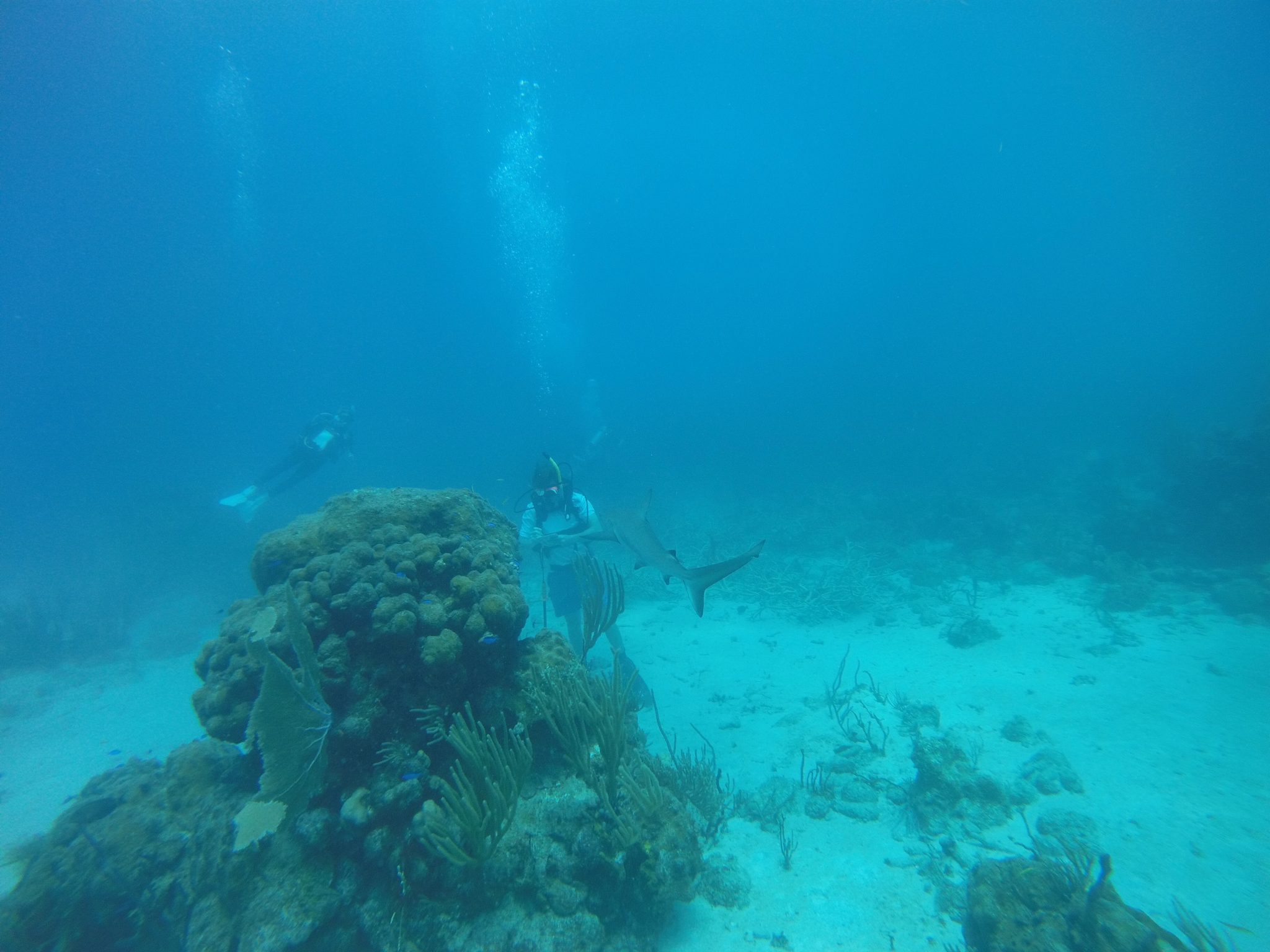Synopsis:
We woke up exhausted from yesterday’s dives, but we pushed through. Our taxi driver glen drove us to the boats where we were put to work lifting the tanks into position and getting out gear ready. Today we started our project dives. Our project is determining if there is a relationship between the percent of healthy staghorn coral to amount of fish in the area. We predicted that we would need three dives to complete all of our work, but after some luck, we completed all of our project dives today in two dives. Our first dive was at the ginger island backside. While not a deep dive, this site is filled with thousands and thousands of corals. We did not have to go more than 10ft before we found a suitable 25% healthy piece of staghorn coral to work with. First we placed a single lionfish marker nearby the coral. Then, we placed three more markers In a square five feet by five feet. Then we set a timer for ten minutes and started counting it down. Every two minutes, we counted the amount of fish in our square. At then end of the ten minutes, we picked up our markers and moved to our new location. Not far away, we found our next coral site. Not wasting any time, we set up our five foot square perimeter around a 50% healthy coral. We started our timer and every two minutes counted the amount of fish. In our perimeter, we saw gobies, and yellow striped wrasse. We took a short break on the boat and had a snack. 30 minutes later, we were at the ginger island steps. On our second dive, all we had to find was one, 75% healthy coral. After a short swim, we came across a suitable coral as there were plenty to choose from. We set up our perimeter and conducted our experiment. After the ten minutes, we packed up our gear and just explored the beautiful reef. The best sfish we saw was a porcupine pufferfish. A fun surprise on our second dive was while we were doing our experiments, two curious black tip reef sharks circled us for 15 minutes. After our dives, we ate lunch and rested. In the afternoon, we did a snorkel trip a mile long. It was kind of bland and sad, but we never got a chance to enjoy ourselves as we had to keep up with the fast pace of our guide Zaltan.
What I learned:
I learned that the main fish population that inhabit the staghorn coral reefs are the smaller fish around 3-5 inches long as well as juvenile fishes that house in the crevices of the coral. The coral provide the fish with a safe haven until they can reach maturity and defend themselves. Also I learned about the tentacles on the polyps at night produce tentacles that trap fish or other algae/nutrients. I also learned that one stroke for Zaltan is ten strokes for every one else.
Looking forward to:
I am looking forward to continuing our project and gathering new data. I am also looking forward to seeing new fish and learning about the relationships between new ecosystems.





